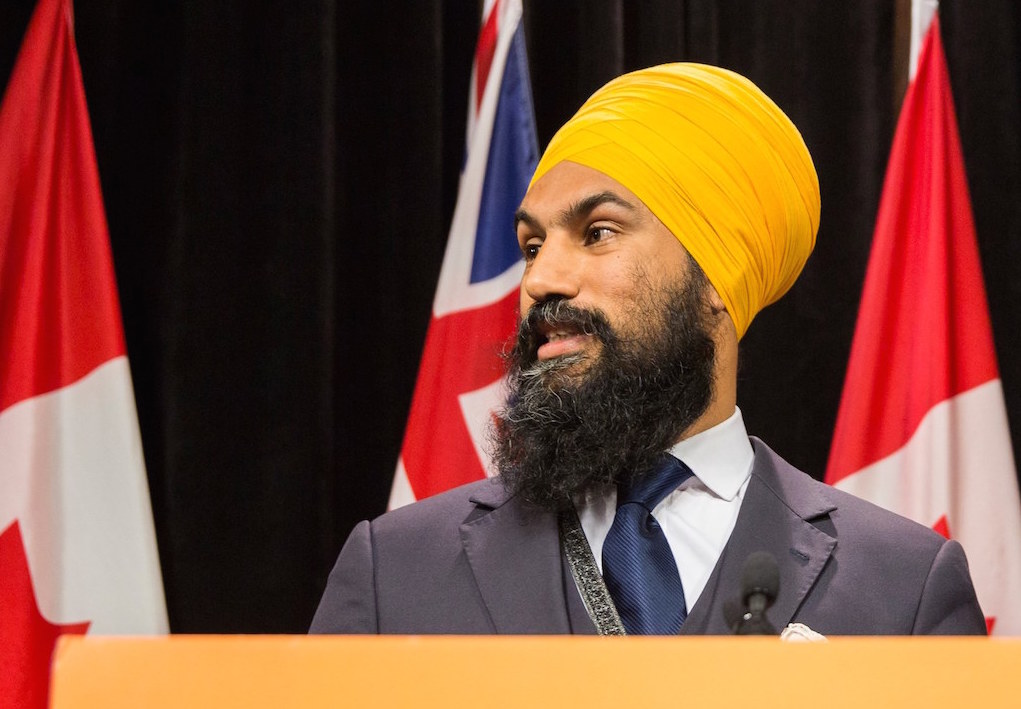We now have much data which shows — in the words of one report — there is a “lower quality of care” in privately owned, for-profit long-term care facilities than in public or not-for-profit homes.
In November, when it issued that report, the Canadian Centre for Policy Alternatives (CCPA) suggested Canadian governments, both federal and provincial, should make moves to eventually abolish the for-profit long-term care sector. The CCPA said doing so should be a key part of any federal exercise in setting national standards for long-term care.
Last week, New Democratic Party Leader Jagmeet Singh took up that call.
Private long-term care businesses have inevitably chosen to focus more on dividends to shareholders than services to their residents, Singh argued. That has meant cutting corners on staff and services in order to squeeze the maximum profit out of the businesses. The result, during the COVID-19 pandemic, is that many people have died unnecessarily.
Singh wants the federal government to finally come out with its long-promised standards for long-term care. He says they should base those standards, and their application, on the health-care standards of the 1984 Canada Health Act.
Echoing the CCPA, the NDP leader also now demands that the federal government bring all for-profit long-term care homes into the public or not-for-profit sectors.
When pressed on the latter point, Singh had to admit it is not within the federal government’s power to change the status of long-term care homes. They fall entirely within provincial jurisdiction. To achieve a transition to fully public or not-for-profit long-term care the federal government would have to work with the provinces.
A good start, Singh says, would be for the federal government to offer new money to the provinces for their long-term systems, but with significant strings attached.
One of those strings could be that all new facilities, all new beds, must be public or not for profit.
Another could be that workers in long-term care should be engaged on a full-time basis, with adequate pay, and that there should be a minimum staff-to-resident ratio.
Federal money could also be contingent on provinces establishing rigorous inspection regimes for the long-term care sector.
These and other similar measures would have the ultimate effect of moving the system away from the for-profit model. The added costs of abiding by all of these new regulations would mean long-term care would no longer work as a cash cow for investors.
And talking about investors, a federal government entity owns one of the major players in the long-term care business, the Revera corporation, lock, stock and barrel. That federal entity is the Public Sector Pension Investment Board (PSPIB), which manages the pension money of federal civil servants.
Singh argues the federal government could make a good start toward getting the profit motive out of all long-term care facilities by transforming Revera into a public rather than for-profit corporation.
Given the sad record of Revera during the pandemic — there have been 230 deaths at its facilities — the Trudeau government would have a sound public policy motive to act decisively in this case.
Sadly, based on experience, taking decisive actions that risk annoying powerful corporate interests and the investor class is not something the Trudeau Liberals are prone to do.
Revera is a massive multi-tentacled corporation. Its holdings include 186 long-term care communities that it manages, 225 it owns outright, and more than 22,500 units it manages.
It owns other health-care businesses as well, in Canada, in the U.S. and in the U.K. Historically, Revera has had extensive political connections, especially with the Ontario Conservative Party.
The Public Service Alliance of Canada, the union that represents many federal workers, supports the New Democrats on this one, even if it will mean their pension fund will have to find other ways of earning cash.
The NDP could prod the Trudeau Liberals to get up their gumption and take a bold step on Revera by outlining a detailed road map as to how they would go about buying out the PSPIB and transforming the company from a for-profit to a not-for-profit model.
A Crown corporation for vaccines
While they’re at it, the NDP leader has also suggested the federal government should extend its reach into the vaccine business. It should set up a public company, a Crown corporation, to manufacture vaccines in Canada.
“Conservatives cut our capacity to make vaccines here in Canada,” Singh says. “They shut down the publicly owned facility for making vaccines. The Liberals had years but did not reopen it. We are vulnerable because we cannot manufacture vaccines here at home, and we now need to rebuild that public manufacturing capacity.”
This is not a new idea from the NDP. They proposed it months ago. Now, perhaps, given all the hiccups in Canada’s vaccine rollout, largely due to unreliable supply, more people will be willing to consider the idea.
One who seems to have gotten the message is Dr. Alan Bernstein, a member of the federal government’s COVID-19 task force and CEO of the Canadian Institute for Advanced Research.
Without specifically mentioning the idea of a Crown corporation, Bernstein told the CBC that “we need domestic vaccine production capacity in the country for the next pandemic and also for this pandemic. If there are variants arising, we may be designing second-, third-generation vaccines and vaccinating the population for the next two or three years.”
When eminent medical experts join their voices to those of opposition party leaders, perhaps it is time for the government to take heed.
Karl Nerenberg has been a journalist and filmmaker for more than 25 years. He is rabble’s politics reporter.
Image credit: Jagmeet Singh/Facebook



